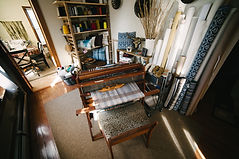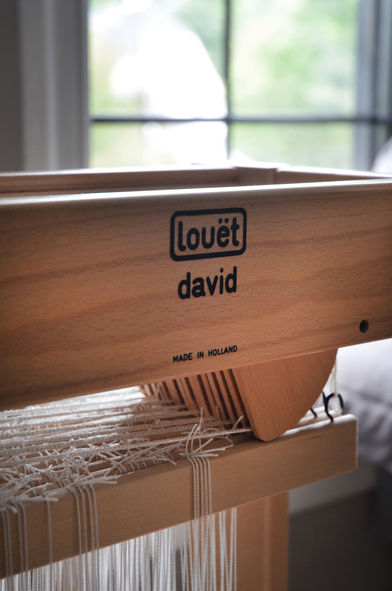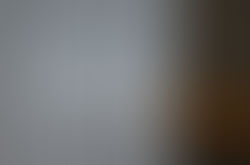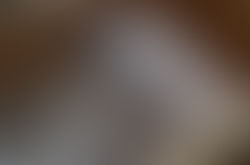



BEHIND THE SCENES
A FIELD GUIDE TO THE ART OF HAND WEAVING & DYEING

WEAVING: A HISTORY
OF THE LOOM
The earliest record of loom use dates back to around the 5th millennium BC. These primitive looms were constructed of simple beams and bars to form a framework that supported the manipulation of warp and weft threads. The overall function of the loom remained virtually unchanged, but improvements were introduced in Europe and Asia during the medieval era. By 1500, The Navajo tribes were weaving vibrant blankets and rugs made from their abundant supply of sheep wool. With the ability to incorporate intricate stripes and various geometric shapes with color, the traditional loom was once again advancing. By 1700, the Jacquard loom with its punchcard and guided hook system, reinvented the textile industry, deeming itself one the most important inventions of the Industrial Revolution.
"Tie-Up" Refers to the Map or Draft Used to Create a Weave Structure
The Tie-Up Textiles studio originated in the suburbs of Philadelphia but has since grown considerably and during the pandemic, relocated itself to the tiny city of Wilmington, Delaware. Currently, Tie-Up produces handwoven fabrics on four floor looms: a Norwood, two Loüet Davids, and a tiny Saori PIccolo loom. The Norwood loom is constructed from gorgeous cherrywood with a convenient collapsible option for saving space between projects. This particular loom is a four-harness rising shed loom with a 28" weaving width. Now considered an antique, Norwood looms originated in Cadillac, MI by a furniture maker during the Great Depression. By 1996, all American-made production of these magnificent little looms had ceased. To come across one now is quite rare. Kathleen obtained this loom during her senior year of college and has used it for all production for over ten years.
In the spring of 2023, the studio obtained its second production loom, a Loüet David. This piece is a retired studio loom from an art center in upstate New York. Named after David and Goliath, it is also a floor loom with compact 8-harnesses and a unique sinking shed. The David can achieve a 35" weave width and is considered the Rolls-Royce of floor looms today for its simple, light, and user-friendly construction.

A STEP INTO THE STUDIO:
OUR LOOMS

A DYEING ERA:
PIGMENT & THE ART OF SHIBORI
Shiboru, which translates "to wring, squeeze and press" fabric originated as a Japanese art form. This manipulation of fabric by stitching, tying, knotting or twisting is still practiced today in an array of styles and techniques. Tie-Up's fabric collection of yardage, pillows and tabletop goods has taken Shibori-dyed fabrics, digitally manipulated them, and recreated them for an array of ready-made products available in a rainbow of colors. One advantage to this method is the ability to significantly reduce water waste by digitizing our main product offer. Our boutique line of hand-dyed linens uses fiber-reactive dyes known for their color and wash-fastness properties. These dyes are specially formulated to bond to protein fibers such as cotton, linen, and silk.
A special detail that is consistent throughout the Tie-Up Textiles line is that each designs started with fabric and resulted in altered fabric. In other words, all motifs in the yardage collection are engineered renderings of my very own handwoven fabrics, shibori-dyed swatches, or prints from my curated collection of laser-cut wood blocks. Scanned, cleaned up, and digitized for continuous yardage, this innovative process has allowed a microbusiness to scale its otherwise limited design structure to the interior design and architectural professional fields.


I understand that you have endless options when it comes to consumer choices for home decor. There is no doubt an abundance of low-cost, pretty products. However, the notion of both sourcing and selling ethically has always been at the forefront of Tie-Up's business model. When purchasing my products, hours of work have gone into weaving fabric, investing in raw materials, and fabricating an entire line of homewares all within my small studio. No portion of the production process is outsourced. I partner with industry-leading companies that share this passion and employ their teams with fair pay. While I understand that my specialty items may not be accessible to every household, I have consciously built a line with a wide range of price points, welcoming all to experience quality decor.
THE MAKING OF A
COLLECTION
SHOPPING SMALL




















